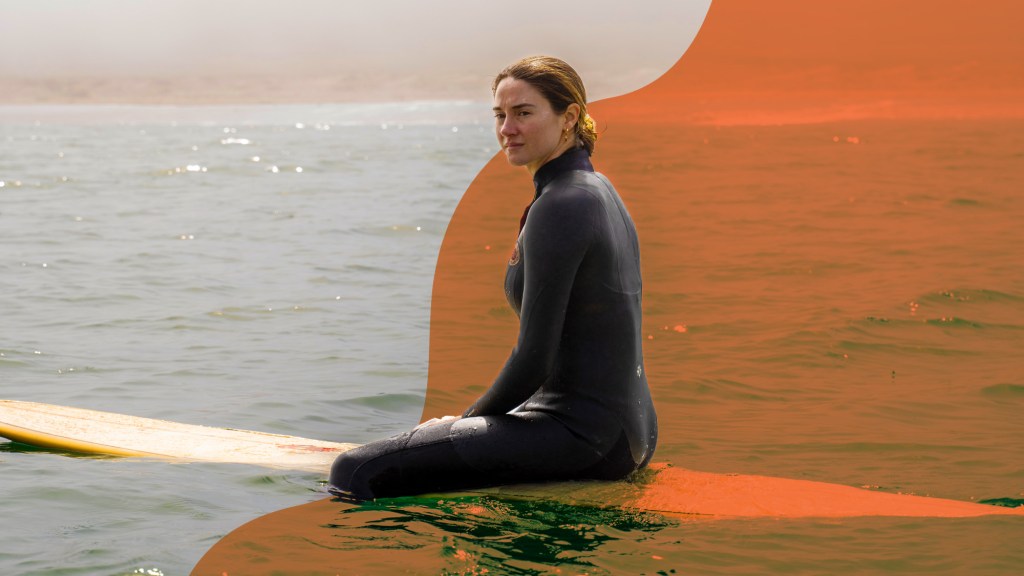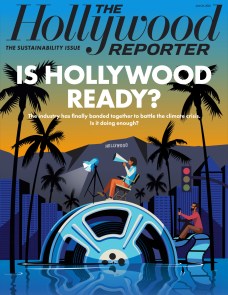
Sam Johnson/Intuitive Content
It seems strange to call someone just 32 years old a “lifelong environmentalist.” And Shailene Woodley herself rejects labels like “environmentalist” or “activist.” So… passionate about the environment? A tree lover? Whatever you call it, the Big little lies And Ferrari The star has been an active advocate for environmental causes since she was a child actress appearing in films like Divergent And The descendantsfrom his campaign to create a recycling program at his high school in Simi Valley, California to his arrest protesting the Dakota Access pipeline in North Dakota in 2016.
Woodley says she’s become judicious over the years about how and where she uses her platform. Her latest attempt to shed light on an environmental issue leads her to dive for purple sea urchins in the Pacific Ocean off Catalina Island in the new PBS documentary series. Hope in the waterSince Big little lies creator David E. Kelley and chef Andrew Zimmern. Woodley’s episode, the series finale, airs July 3 and is dedicated to rewriting seafood menus with sustainability in mind.
In late May, Woodley spoke with THR about how a childhood spent camping with her family transformed into a conscious effort for conservation, and what’s changed in her activism since she was first dismissed as “that pretty little hippie girl.” »
You have been active on the environmental issue for many years. Did you enter Hope in the water with something specific you wanted to communicate?

This story first appeared in the June 2024 sustainability issue of The Hollywood Reporter review. Click here to see the rest of the issue.
The only thing that was important to me was that it was authentic, accessible and relevant, not just for people who can afford to eat with a little more conscience. Very often when it comes to the environment, especially in the case of culinary consumerism, the vast majority of people are left out of the conversation for economic or accessibility reasons. The biggest question I had was, “Who is the audience?” Who can participate? I really liked that it included so many people, regardless of the economics or accessibility of the location. This is not something that is limited to people who shop at Erewhon. It’s really about reaching out to consumers and people who live in food deserts and don’t just live near coastal areas.
How long ago did you learn to dive?
I guess I learned to dive illegally ages ago, but I actually only got my PADI (Professional Association of Diving Instructors) certification a few years ago. I grew up in Los Angeles. We were still in the ocean. And then I moved to Hawaii when I was 18 and I did a lot of freediving and I was also playing with scuba gear in a way that was, actually, I think illegal, to be honest. Water has always been part of my life. It’s the thing that makes me feel the most centered and grounded. And diving has opened up many other avenues of exploration and deep care of the sea.
You spent a lot of time outside when you were a child. When did you begin to become aware of the environment, not only as a place to enjoy, but also as a place to worry about?
I guess I’ve never cared about the environment because I believe the Earth will be fine. My concern is more about humanity. I wouldn’t use the word “activist” or “environmentalist.” I understand the need for labels, but I don’t necessarily agree with them. I love the Earth. It is very simple. There are so many things that, even if explained by science, still seem like a quantum miracle.
Was there a moment when this feeling of respect really crystallized for you?
I remember being in the middle of the jungle in Costa Rica visiting my cousin when she lived there, and we were running through the jungle for hours, going from place to place, picnicking and just enjoying our time there. And there was this tree that was so massive that I felt like I was in Avatar, and I just remember falling to my knees and being completely in awe. But it’s the same feeling I get when I see leaves fluttering in the Santa Ana winds in Los Angeles. Or watching the sun go down each day. You have these 25 minutes of golden light. For me, nature is art. And I think there’s a common misconception that you have to travel or be somewhere exotic to experience that wonder. In reality, it’s like watching a cat in a rescue for 10 minutes, and that thing is doing gymnastics. It’s a wild wonder. And so yeah, I’m really, really easy to impress when it comes to nature.
The first time I became aware of your activism was when you were arrested while protesting the Dakota Access Pipeline. When did you go from “nature is art” to “I’m going to do something here”?
It was probably my junior year of high school that I said, “Okay, we’re going to go to all the higher-ups at my school and then eventually the school board and ask them to create a recycling program.” » When I was in my late teens, Rachel McAdams and a friend of hers started this website called Green is Sexy. It was an old-fashioned blog where you could click a button and it would tell you one thing. And that was the first time I was like, “Oh my God, straws are bad for the ocean.” » “Oh my goodness, I can unplug my toaster, coffee machine, and hair dryer when I’m not using them.” It made me think about the small, simple things I could do in my life every day. And these are practices that I still use. Every time I’m at a friend’s house, I find myself unplugging devices in their house and they always say, “Oh, Shai was there.” » This website really gave me concrete tools and, I would say, radically changed the way I see consumption and my role in the consumption chain.
How do you decide if you want to put your name to a project or initiative??
Anything that I think can really make a difference is where I put my energy. Look, we live in a world where hashtags and trends are sexy. But I don’t often find that this sexiness translates into real change. I look at things and I say, “OK, so if we do this now, how is this going to affect us in five years, 10 years, 30 years, 50 years?” The beautiful thing is that so many people now care about nature and conservation, and a conversation is starting that wasn’t happening before. I’m trying to figure out where my particular strengths can be most useful in terms of creating lasting change, not just something sexy for a hot minute.
Are you planning to participate in the presidential election this year?
There’s a deep wisdom that I’m trying to learn and recognize better: Alright, so there’s a lot of noise right now. Am I just going to add to the noise? Or is there a specific frequency among this noise that might be heard in a different way or might be helpful? If something can actually make a difference, I’m all for it.
Is the conservation conversation different today than it was when you first started talking about these issues?
When I first started talking about it publicly, 15 or 16 years ago, it was like, “Oh, this cute little hippie girl. » I’m definitely a tree advocate, but this was seen as a cutesy, idealistic thing rather than a real cause to pay attention to. I look at people like Leonardo DiCaprio, Susan Sarandon, Edward Norton, Harrison Ford, people who have been having this conversation publicly for a very long time. It must have felt like shouting into a void. And now there are finally other people who have joined this chorus. I met people who had been trying to have this conversation for decades, and there was a feeling of exhaustion, like, “Where were you all 20 years ago?” Why does everyone suddenly care now? » Often, until it is at our doorstep, we don’t want to pay attention to it.
This story first appeared in the June 2024 sustainability issue of The Hollywood Reporter review. Click here to see the rest of the issue.